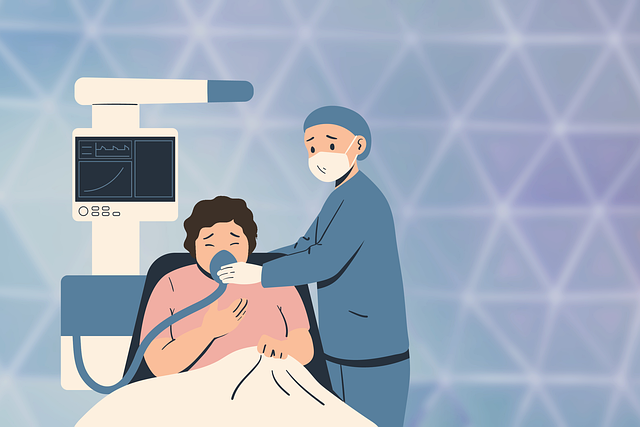An interesting article titled “Cavernous sinus thrombosis and blindness in a recovered (COVID-19) patient post simple tooth extraction: A case report,” is scheduled to appear in the Journal of Oral and Maxillofacial Surgery and currently available in pre-proof form, written by Mohamed Abdelmoiz, Ahmed Nagi Alghandour, and Amr Gibaly (2022). The article discusses a case report the authors document where a man lost vision in one eye after having a tooth extracted after he had recently recovered from COVID-19 (Coronavirus). Based on this article the authors feel that patients who had recently had COVID-19 and also have diabetes should delay having tooth extractions performed for a period of time after recovering from COVID-19.
In the article, the authors describe a 69 year old man with well managed diabetes who was admitted to a hospital due having hypoxia and fever. He was found to be dehydrated with an elevated blood pressure. A computed tomography (CT) scan of his chest showed bilateral subpleural patchy areas of ground-glass opacities. He was given a nasal swab polymerase chain reaction (PCR) test for COVID-19 and found to be positive. The man remained in the hospital for twelve days where he was treated with oxygen therapy, anticoagulants, steriods, IV fluids, IV antibiotics, and antiviral drugs. Upon discharge, the man was told to continue taking the anticoagulant Xarelto.
Tweleve days after being at home from the hopsital the man experienced pain in a fractured right maxillary (upper) second molar (tooth). He went to see a dentist who reviewed his entire medical history and diagnosed him with a retained right maxillary root. The dentist extracted this problematic tooth from the man without prescribing any prophylactic antibiotics or checking his D-dimer level, which could indicate deep vein thrombosis. After the extraction the man began to experience severe headaches disturbed consciousness levels. This prompted him to go to a hopsital where the man was admitted to the intensive care unit (ICU).
While at the hopsital after the tooth extraction, the man was given a brain magnetic resonance venography (MRV) with a contrast that showed transverse and sigmoid venous thrombosis. A magnetic resonance imaging (MRI) scan showed cavernous sinus thrombosis and sinusitis in the right maxillary and sphenoid sinuses. The man had a repeat MRV perfomed nine days into this hospital stay. This MRV showed improvement in transverse and sigmoid venous thrombosis which led to him being discharged from the ICU. The man complained of having a large, firm swelling in his right cheek and having trouble moving his right eye. An exam showed an intraoral canine space infection with extraoral buccal space swelling on his right side. He was refered to the ear, nose, and throat (ENT) and ophthalmology departments for visits. The ophthalmology department found the man had a relative afferent pupillary defect (RAPD), ptosis with eye movement limitations in all directions, and a central retinal artery occlusion. The man had functional endoscopic sinus surgery performed by the ENT deparment and his canine space was drained. The man’s symptoms of cavernous sinus thrombosis went away as did any clinical signs. However, the man was left loss of vision in his right eye when he was discharged from the hospital.

In the discussion of the case, the authors say that cavernous sinus thrombosis leading to blindness is uncommon. The loss of vision could be caused by the occlusion of the central retinal artery secondary to orbital apex compression, emboli, internal carotid arteritis, toxic neuritis, and ischemic optic neuropathy. The authors feel that in this mans case the canine space infection, along with the mans intense inflammatory reaction and the patient’s immunocompromised state, had lead to the loss of vision.
The authors also discuss, COVID-19 and say that may induce endothelial inflammation and hypercoagulability. In patients with diabetes this can be aggravitate endothelial dysfunction and lead to more aggressive thrombosis. They also say that a prophylactic antibiotic should be given patients with diabetes prior to tooth removal. Describing the case the authors state:
“We relate the incidence of cavernous sinus thrombosis and blindness to not deferring the tooth extraction into the safe timing and the neglecting of the safety precautions concerning the patients’ immune and thrombotic states.”
The authors suggest for three months after recovering from COVID-19 a patient is tested for indicators of blood clots prior to any elective surgery like tooth extraction. The authors also suggest the following guidance and wait times for patients who had COVID-19 prior to having a tooth extracted.
- Wait four weeks for a patient who had no symptoms of COVID-19 or who had only very mild, non-respiratory symptoms.
- Wait six weeks for a patient who hd symptoms symptomatic patient (like a cough or shortness of breath) and who were not hospitalizated
- Wait eight to ten weeks for patients who had symptoms and were hospitalized or patients who are immunocompromised or have diabetes.
- Wait twelve weeks for patients who were hospitalized and admitted to the ICU.
“The authors mention that their conclusions are their opinions alone. They say: …the COVID-19 infection and [diabetes] … represent two worldwide pandemics, where, when combined, the patients are susceptive to aggressive inflammatory response and morbid thrombosis.”
It seems that until more evidence comes out to the potential contrary, one should be cautious about having any teeth extracted after having COVID-19 for at least a month and up to months depending on the persons health and difficulty in recovering from COVID-19.
